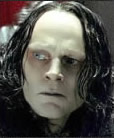The Morgoth Element
The Morgoth Element is something not discussed in any canonical book, being found only in some of Tolkien’s writings later placed in “Morgoth’s Ring”. However, the idea of the Morgoth Element fundamentally affects the understanding of the nature of evil in Arda and the creation and workings of the Rings of Power.
The Morgoth Element
When in Middle-earth, Morgoth became fully incarnated in an attempt to be able to control the hroa – the physical matter – of Arda. This was a similar, but much more far-reaching, thing to what Sauron did when investing his power into the One Ring.
Because of this, it came to pass that all matter outside the Blessed Realm contained a portion of Morgoth’s physical “essence”. This was known as the “Morgoth Element” or the “Morgoth Ingredient”, and it meant that Morgoth’s power was disseminated throughout Middle-earth – and he became part of everything in the world, both animate or inanimate. There did seem to be certain elements into which Morgoth concentrated his power, and one of these was gold – the main constituent of all Rings of Power except Nenya. There were also elements to which he didn’t pay much attention – for example, silver (though mithril seems to have been an exception to this) and water. It has been also suggested that the wills of Morgoth’s evil creatures – e.g. balrogs, orcs etc – were part of Morgoth’s dispersed power.
The main effect of this dispersal of power was to make all things created from the hroa of Middle-earth have a tendency to lean towards evil and Morgoth – “they were none of them wholly free of him in their incarnate form, and their bodies had an effect upon their spirits”. And what that meant was that Morgoth could never be totally dispelled from the world – unless Arda was completely disintegrated.
There was, however, a downside – just as with Sauron and the Ring. From incarnation into the world, Morgoth lost a large amount of his Valarin powers. This was a permanent effect as Morgoth had abandoned his Valar body, with no possibility of return, and he started to exist solely as a desire to possess and dominate matter.
Because Morgoth had taken up a physical form, the Ainur and the Children of Ilúvatar had to fight him on a physical level. And the problem with this was that any direct confrontation with Morgoth would substantially affect the substance of the world through the Morgoth Element. This seems to be why the Valar did not rush to battle with him in any major way.
“The whole of ‘Middle-earth’ was Morgoth’s Ring, though temporarily his attention was mainly upon the North-west. Unless swiftly successful, War against him might well end in reducing all Middle-earth to chaos, possibly even all Arda. It is easy to say: ‘It was the task and function of the Elder King [Manwë] to govern Arda and make it possible for the Children of Eru to live in it unmolested.’ But the dilemma of the Valar was this: Arda could only be liberated by a physical battle; but a probable result of such a battle was the irretrievable ruin of Arda.”
The Morgoth Element and Sauron
While Sauron could not extract Morgoth’s essence from the fabric of the world, he did automatically profit from the fact that Morgoth’s ill-will inhabited the Earth and was willing to co-operate with many of Sauron’s evil goals.
“Morgoth’s Ring” states that the Morgoth Element was a prerequisite for the ‘magic’ Sauron worked upon matter, particularly the One Ring. However, exactly how the Rings of Power interacted with the Morgoth element is unknown, but it has been suggested that the increases in power seen by ringbearers when wearing a Ring could be associated with the Rings accessing the Morgoth Element – and the more powerful the bearer to start with, the better a Ring could tap into the Morgoth Element. The Morgoth Element could also be the “backdoor” Sauron worked into the Rings of Power, and it could be that Sammath Naur contained a particularly strong concentration of the Morgoth Element, thus aiding the creation of the Ring in some manner.
The Morgoth Element and the Children of Ilúvatar
The presence of the Morgoth Element meant that there was a duality within all life on Middle-earth – a conflict between the Morgoth Element contained within all matter, and that in life which is pure and untainted (represented in “The Silmarillion” by the Flame Imperishable). The evil in men then stemmed from a willingness to give in to the Morgoth Element, which allowed their souls to be tainted by the very materials from which they were composed.
So did Morgoth achieve his goals?
The common wisdom is that Morgoth failed as eventually he was cast out into the Void, not to trouble Arda again in that age, or many ages to come. But did he fail? Yes, his body was defeated, but until the end of Arda, he endured in the Morgoth Element. His essence ran through the veins of Middle-earth, of Arda Fallen, until the end of the world. So actually, I’m not sure he did fail after all.
References
Morgoth’s Ring, Myths Transformed, VI, VII (ii) and (iii), VIII










2 Comments
Very interesting… I have not heard of the Morgoth Element until I read this. Thanks!
This is a very thought provoking article. It brings up the question: is it really possible to destroy evil forever? Or is evil just entwined with our world automatically? Very interesting, it definitively gives another view of Morgoth’s “defeat”.